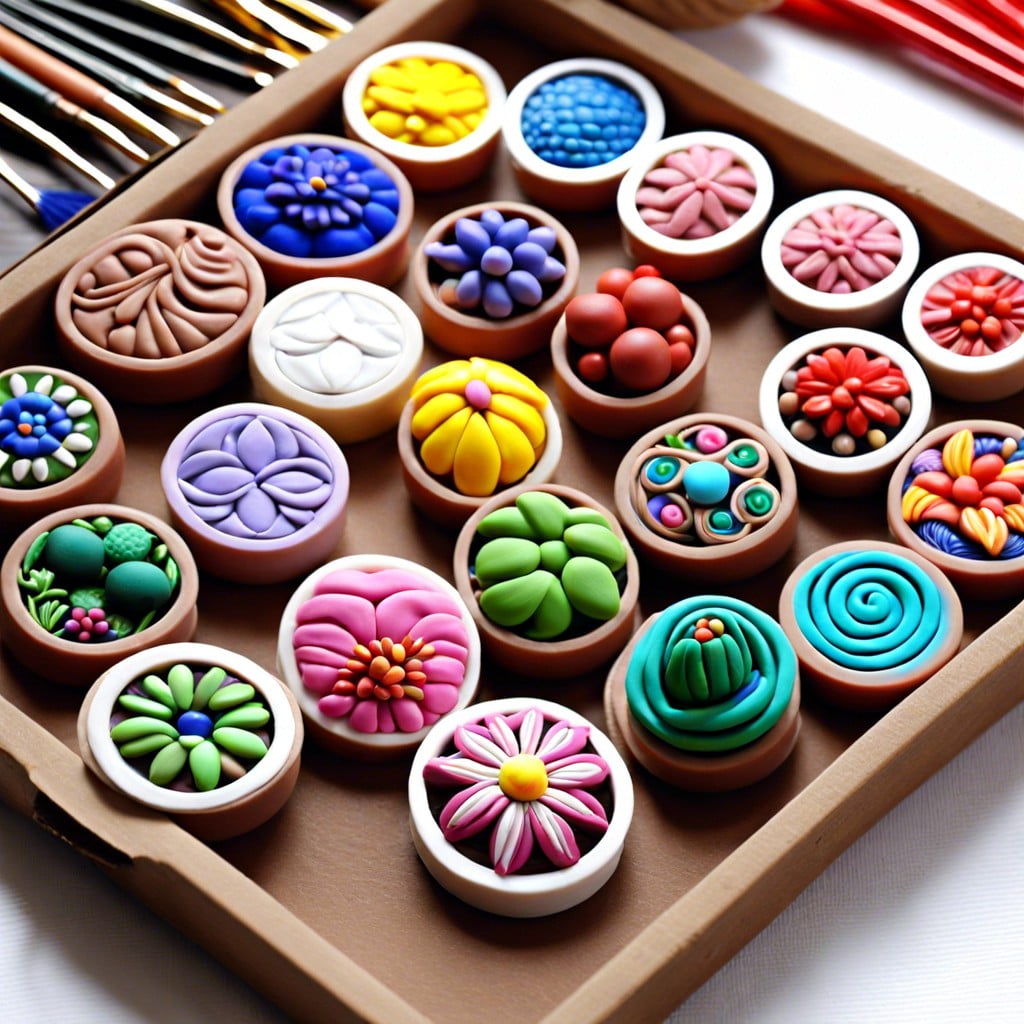Learn how to effectively paint polymer clay to customize your crafts with vibrant colors and finishes.
Key takeaways:
- Choose the right polymer clay for painting
- Learn about the different types of polymer clay available
- Use acrylic paints for their easy application and durability
- Consider using acrylic paint markers for intricate details
- Prep your clay by cleaning and roughening the surface before painting
Choose the Right Polymer Clay

Selecting an appropriate type of polymer clay is crucial for your project’s success, especially if you intend to paint it. Polymer clays like Sculpey and Fimo have a smooth texture, making them ideal for painting. These clays bake to a firm finish, offering a stable surface for your artwork.
For best results, opt for lighter colors, as they display painted colors more vividly. Remember, the quality of the clay can affect the adhesion and appearance of paint, so choosing a well-regarded brand can lead to better outcomes. Keep in mind that softer clays may be more challenging to paint, as they can be sticky or retain fingerprints.
Always consider the final use of the item – keychains or jewelry require durable clay to withstand handling, while decorative pieces might allow more flexibility in your clay choice.
Types of Polymer Clay
Polymer clay comes in a variety of brands and formulas, each with its unique properties suited for different artistic and functional applications.
- Standard Polymer Clay: Ideal for beginners, easily available; it’s versatile and perfect for both sculpting and jewelry making.
- Professional-Grade Polymer Clay: Has a firmer texture, suited for detailed work and durability after baking.
- Liquid Polymer Clay: Can be used as a bakeable adhesive or to create unique decorative effects such as faux glass or enamel.
- Flexible Polymer Clay: Retains a flexible quality even after baking, which is great for projects requiring a bit of bend.
- Sculpting Polymer Clay: This type has a more elastic texture, adapted for sculptors who need extra firmness to achieve fine details in their work.
Choose a type that aligns with your project’s needs to ensure the best results when painting.
Pick Your Paints
Acrylic paints are ideal for polymer clay due to their easy application and quick-drying attributes. They adhere well to the surface, providing a lasting finish. Water-based acrylics offer the additional benefit of easy cleanup with soap and water.
When selecting paints, opt for those with a thicker consistency, as they provide better coverage and prevent colors from bleeding into each other. Transparent acrylics can be beneficial for creating a stained glass effect or for subtle tinting.
It’s possible to mix colors to achieve the desired hue, but for consistency and convenience, have a range of basic colors at hand. Metallic and pearlescent acrylics are available for adding shimmer and shine to your creations.
For intricate details or adding fine lines, acrylic paint markers can be a practical alternative to brushes. These markers give you control and precision, making the detailing process smoother.
Remember that the quality of paint can significantly affect the final result, so investing in high-quality acrylics can yield a better finish and reduce the chances of fading or peeling over time.
Acrylic Paints
When selecting acrylic paints for polymer clay, opt for high-quality brands to ensure better adhesion and durability.
Water-based acrylics are particularly suitable due to their quick drying time and ease of use.
These paints are versatile and can be thinned with water to achieve a wash of color or layered for solid coverage.
It’s also important to choose the right brush for your project – fine-tip brushes facilitate detailed work, while flat or round brushes are great for larger, even applications.
Before painting, make sure the clay is clean and free of oils to prevent the paint from peeling or flaking off after it dries.
Prep Your Clay for Painting
Before you begin applying paint, ensure your clay piece is free from dust, oils, and fingerprints. Wipe the surface with a lint-free cloth slightly dampened with rubbing alcohol or use a gentle brush to dust off particles.
Allow the clay to dry completely, as moisture can interfere with paint adhesion. Smooth out any imperfections with fine-grit sandpaper; this will also create a slightly rough texture that helps the paint stick better.
Remember, a clean, well-prepared surface is key for the paint to go on smoothly and for achieving a professional-looking finish.
Recap




